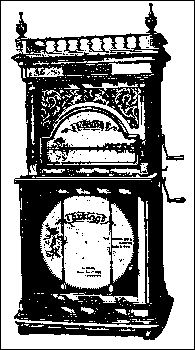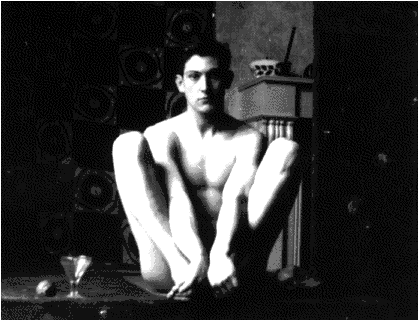A New Machine
Tracy Kidder
(Back Bay)
 The Soul of a New Machine came out to much acclaim twenty years ago. It told the story of the development of a supercomputer at Data General in Building 14A just outside of Boston. The company had built its earlier fortune on the NOVA, one of such elegance and simplicity of design that the company was known as "the Robert Hall of the computer industry."
The Soul of a New Machine came out to much acclaim twenty years ago. It told the story of the development of a supercomputer at Data General in Building 14A just outside of Boston. The company had built its earlier fortune on the NOVA, one of such elegance and simplicity of design that the company was known as "the Robert Hall of the computer industry."The angle, the hook that sets The Soul apart from all your usual normal business success stories is that we get to live with and live in the heads of the people responsible for what was to become a dramatic step forward in the creation of storage capacity and speed and elegance of computers. We get immersed in their drive, their conflicts, their ideals, their hunger to do it. One might argue, the greatest competition was not on the outside but within their own
fragmented, mechanically- Steve Wallach, Tom West, Carl Alsing, Ed de Castro are the names of the characters in this saga, but the strangest character of them all is the well-named EGO, the "new machine" designed to keep Data General competitive. What made it happen was what is known as "the compulsion to program:" Bright young men of disheveled appearance, often with sunken glowing eyes [who play out] megalomaniacal fantasies of omnipotence...their arms tensed and waiting to fire their fingers, already poised to strike at the buttons and keys on which their attention seems to be as riveted as a gambler's on the rolling dice. This is the soul of their "new machine." Despite the commendable writing --- Kidder won a Pulitzer for this one --- the events it relates occurred twenty years ago, and it strikes this critic as a bit of ancient history. It is probably because so much journalistic ink is now squandered on the very industry that Kidder helped to bring into the spotlight. His is worthy journalism, pitting the dedication of workers against corporate shenanigans that mocked that very dedication: two competing factions of Data General were working on the prototype; these factions may well have been set up by a less- Kidder was praised for making technobabble comprehensible to all us squares --- but some of us still remain confounded by the vocabulary. No matter --- it's a commendable piece of writing, especially if you are into technological history.
The Biography of
George Mallory
Peter and Leni Gillman
(The Mountaineers Books)
 One shouldn't learn too much about one's childhood heroes. George Leigh Mallory certainly was one of mine. In grade school I read everything I could find about the man and Mount Everest, the mountain his ghost inhabited for 75 years. In 1963, I followed him to Everest, helping to establish a new route that was not far west of the one he attempted three times. I could look down on the North Col, and across the North Face to where his body was found in 1999. Throughout my life, I have seen him as a symbol of everything that could be admirable in a man.
One shouldn't learn too much about one's childhood heroes. George Leigh Mallory certainly was one of mine. In grade school I read everything I could find about the man and Mount Everest, the mountain his ghost inhabited for 75 years. In 1963, I followed him to Everest, helping to establish a new route that was not far west of the one he attempted three times. I could look down on the North Col, and across the North Face to where his body was found in 1999. Throughout my life, I have seen him as a symbol of everything that could be admirable in a man.
If this new biography can be believed, he was a Brit twit.
That, of course, is unfair, facetious and hardly the opinion of his biographers. He was a victim of stultifying late Victorian mannerisms and language, as was everyone else in the Britain at the time. He had a flair for the trite and remained a master of the mundane utterance until his mid-20s. Yet something about him compelled exceptional interest from both his peers and mentors, and has continued to fascinate.
That admiration may have begun with Mallory's evident charm and physical beauty. Almost no one who wrote about him failed to mention it, and it is a photo of the naked Mallory that graces this book's cover. He was "gentle, considerate, grateful" and "more than beautiful," Arthur Benson, Mallory's principal mentor at Cambridge, wrote in his diary. "He had a strikingly beautiful face," said Graham Irving, an earlier tutor and a prolific writer on mountaineering. "Its shape, its delicately cut features, especially the rather large, heavily lashed, thoughtful eyes, were extraordinarily suggestive of a Botticelli Madonna, even when he had ceased to be a boy -- though any suspicion of effeminacy was completely banished by obvious proofs of physical energy and strength."
Mallory's natural grace and charm --- and a developing enthusiasm for learning --- brought him into the inner circles of Cambridge and close friendships with several members of the Bloomsbury group, the clique of English intellectuals. (It included the painters Duncan Grant, Vanessa Bell and Roger Fry, essayist Lytton Strachey, economist John Maynard Keynes, and novelists Virginia Woolf and E.M. Forster.)
Mallory's connection to the Bloomsbury group apparently also brought him a trial run with homosexuality and a largely unrequited dalliance --- known to the group as "l'affaire George" --- with James Strachey, Lytton's brother. His early close friendships were all with men, a habit reinforced by Cambridge's homoerotic ambiance, the crew he rowed for and --- especially --- by mountaineering. It seems clear that for years, he sublimated virtually all need for intimacy in climbing and other sports. When he met Ruth Turner, his wife-to-be, his conversion was passionate and, to this reader, entirely credible.
It is these early glimpses into Mallory's life that I find most engaging. The chronicling of his well-known climbing exploits --- and tales of derring-do by dilettantes clad in puttees, tweeds and waistcoats --- is relatively old news to me but will interest readers less steeped in mountaineering literature. And ultimately, Mallory emerges as a strong, principled and unmistakably admirable man, quite in keeping with the image I had always harbored.
The Gillmans have exhaustively researched their biography. Fortunately, it was a time when people both wrote letters and kept them. And Mallory and friends were devoted to the sport. If he were your friend today, you'd be getting e-mail from him four times a day. There are plodding moments, and frequent subject-
And for one thing especially, I thank them. During an American tour in 1923, Mallory was asked why he wanted to climb Mount Everest. His answer, "Because it is there," has been elevated to existential profundity by the thousands of lecturers and writers who have quoted it every year since. The Gillmans don't buy into the idolatry, but see the remark for what it very probably was, a glib answer to an annoying reporter.
A Short History of
Same-Sex Love
In America
Leila Rupp
(University of Chicago Press)
 Don't look for sex in this book, and don't look for prudery either. Rupp, who insists she's a historian bred and true, has proved it with a sociologically inclined history of same-sex love in America. It might make a traditionalist blush at some quotations but otherwise avoids graphic description.
Don't look for sex in this book, and don't look for prudery either. Rupp, who insists she's a historian bred and true, has proved it with a sociologically inclined history of same-sex love in America. It might make a traditionalist blush at some quotations but otherwise avoids graphic description.
Rupp, however, walks the walk and talks the talk. She successfully injects her own experience with same-sex love, and it's sorely needed to keep the narrative afloat. There's something ponderous about love affairs related by people who lived them in times when they couldn' t be spoken of directly, and some readers may be put off by the keener interest Rupp displays in herstory than history.
But if you want the facts, ma'am, about same-sex love in the New World during the last 400 years, here they are in abundance.